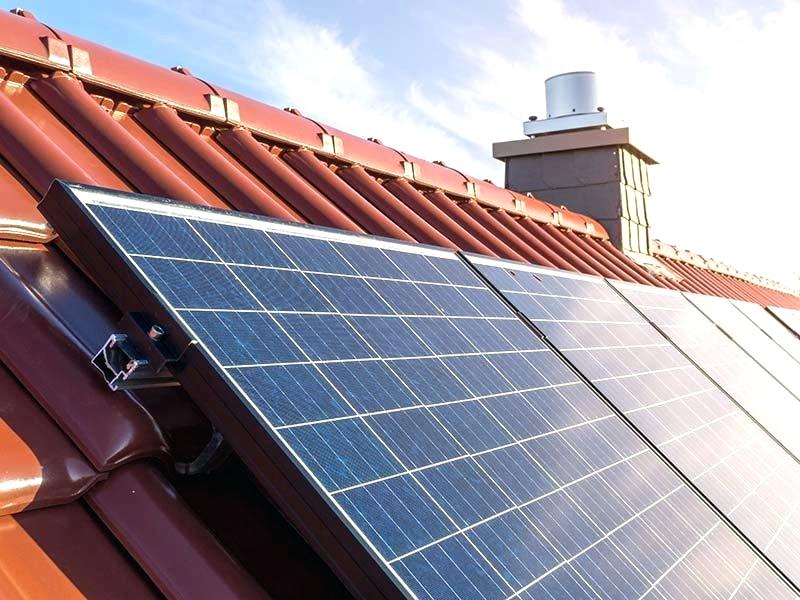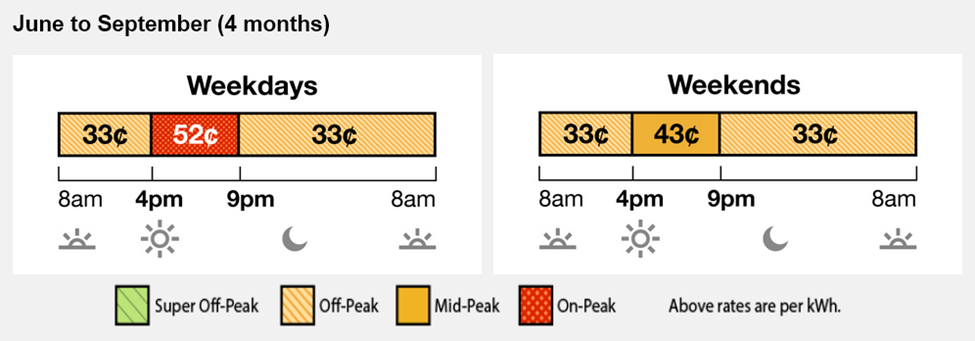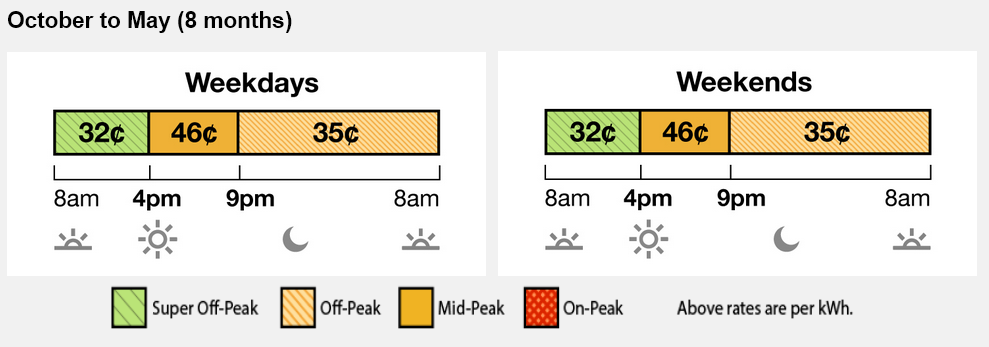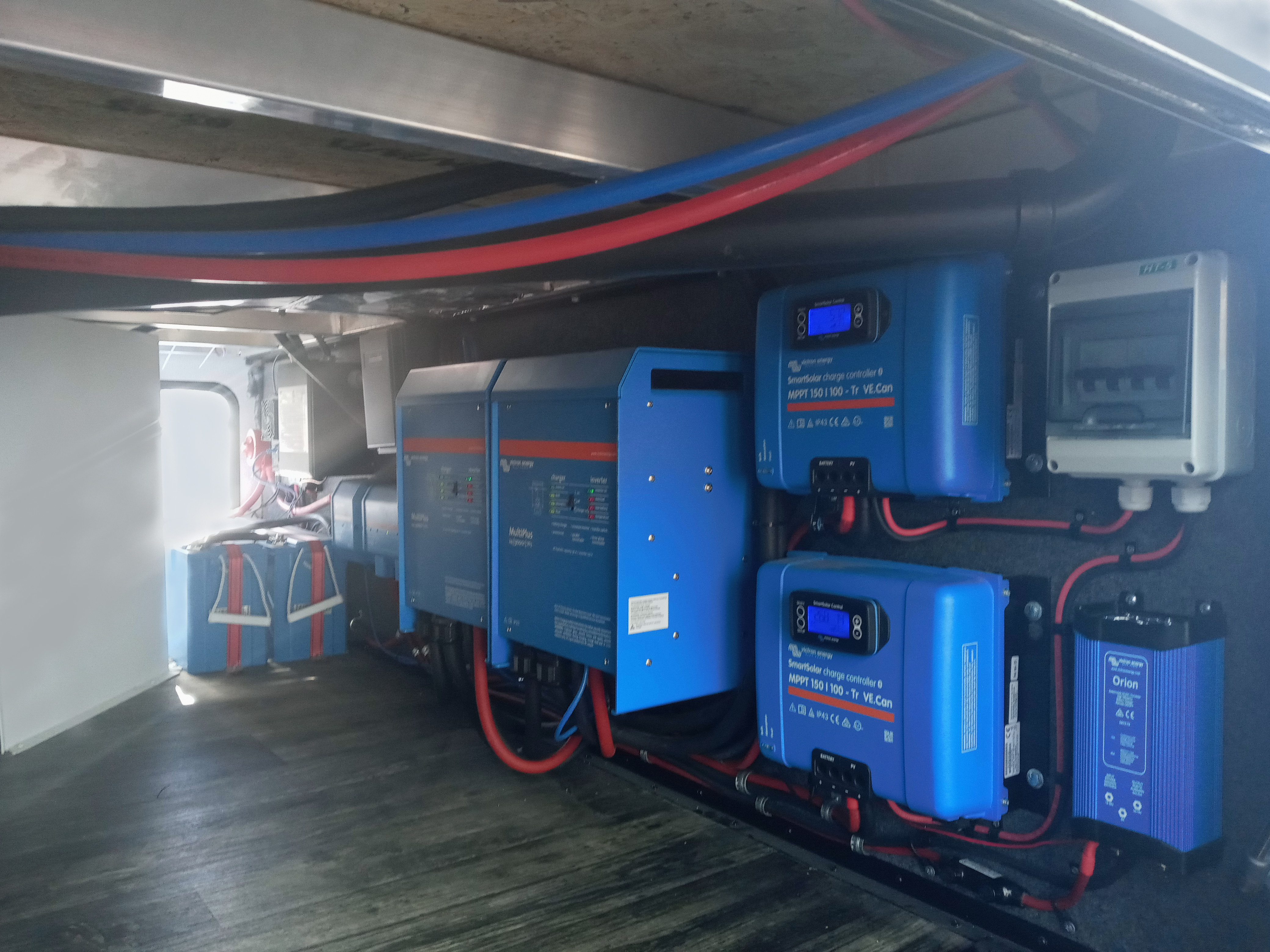Even with solar, your energy may be getting more expensive

Residential customers with grid-tied solar can expect their rates to be changing in 2022.
- All Residential Solar customers must be on a Time of Use (TOU) Plan. Click here to find out more.
- Net Metering Tariffs will be changing how much solar producers are being paid. Click here to find out more.
Time of Use (TOU) Explained
Many people in our area have grid-tied solar systems to help supplement their energy use. Most of these systems were installed without a battery – which means that when the grid goes down, so does your power. It also means that you are using the grid as your battery. While this can be an effective means of having energy available at most times, it also means that SCE – Southern California Edison – calls the shots.
To help offset the increased costs incurred by recent fires, infrastructure upgrades, etc., Edison is moving to a Time of Use (TOU) rate plan for all residential solar customers.
If you haven’t already, you will be receiving notification that you must change your rate plan. There are several options, but no very good ones. Basically, you will be moved to a rate plan that will charge you the most expensive rate between either 4-9pm, 5-8pm or some overall increased rate plan. There are special options for EV owners as well.
You do have another option: add a battery to your system. Most batteries can be programmed to be used during these high TOU rates – meaning you use your battery power from 4-9pm. It also means you will have power even when the grid goes down.
Batteries are an expensive addition to your system. There are financing options available. With the increased TOU costs, the cost of losing power in an outage, and the costs of charging an EV, this may be the more affordable option in the end.
Edison has some good information on their website about their discontinued rate plans at: https://www.sce.com/residential/rates/discontinued-rate-plans
Time of Use (TOU) Plans: https://www.sce.com/residential/rates/Time-Of-Use-Residential-Rate-Plans
EV rate plans: https://www.sce.com/residential/rates/electric-vehicle-plans
Solar producers compensation: https://www.sce.com/regulatory/tariff-books/rates-pricing-choices/net-surplus-compensation
Be sure that you are enrolled in Net Energy Metering with SCE. This is how you receive credit for any extra energy you send back to the grid. Find out more at: https://www.sce.com/residential/generating-your-own-power/net-energy-metering


Net Energy Metering (NEM)
To reflect the changes solar has had on the energy market, Edison has updated their Net Energy Metering (NEM) policy which governs what residential solar customers receive as credit for excess energy sent back to the grid – and how much these solar customers pay for their current energy consumption.
Many of these changes will affect customers based on their PTO (Permission To Operate) date – the date their solar system was first commissioned.
To make it simple: the cost of energy consumption is going up, but the amount of money you will receive for solar energy sent back to the grid is going down.
Energy sent back to the grid will be adjusted to wholesale prices which Edison pays any solar producer. The rate may be 14% of current rates.
Residential solar customers will also pay the same fees for grid maintenance that other non-solar customers currently pay.
What does Edison say about the changes in Net Energy Metering?
What is the status of Net Energy Metering (NEM) in California currently?
As of today, all existing NEM rules and policies continue to be in effect. On December 13, 2021, the CPUC issued a Proposed Decision addressing the future of NEM including implementation of a new “Net Billing Tariff.” A final decision may be decided as early as the Commission’s Business Meeting on January 27, 2022.
What is the cutoff date for submitting a valid interconnection request under NEM 2.0?
If the Commission adopts its Proposed Decision, the last day a customer can submit a valid interconnection request for NEM 2.0 will be four (4) months after the Commission issues its final decision.
I am a current NEM customer, how will the proposed Net Billing Tariff impact me?
The proposed Net Billing Tariff will not change the way current NEM customers are billed until the legacy period on their current tariff expires. The Commission’s proposed decision will shorten the current legacy periods for NEM 1.0 and 2.0 from 20 years to 15 years. Once that period expires, SCE will serve existing and new customers on the new Net Billing Tariff.
What is the payback period under the new proposed Net Billing Tariff?
The proposed Net Billing Tariff estimates that the payback period for customers’ adopting energy storage with their solar system will average 10 years.
Does the proposed Net Billing Tariff change the interconnection process or related fees?
The proposed Net Billing Tariff does not make any significant changes to the interconnection process or related fees.
How will customers be paid for generation in the proposed Net Billing Tariff?
Under the proposed Net Billing Tariff, customers will be compensated for energy exported to the grid based on a predetermined estimated value of the energy at that time of day. The value of these credits varies by the time of day and season and are affected by the supply and demand for electricity on the grid. The value of this credit will usually be lower than the rate that customers pay for electricity, just as wholesale prices for other commodities are lower than their retail prices.
Will the proposed Net Billing Tariff include any new fees?
The proposed Net Billing Tariff includes a fixed Grid Participation Charge for residential customers, which will pay for the costs of maintaining, improving, and reliably operating the grid that both NEM and non-NEM customers depend on for reliable power but that NEM customers currently avoid. This charge also pays for public purpose programs like those supporting bill assistance for low-income customers. Low-income customers are exempt from the Grid Participation Charge.
Are there any changes to the MASH or SOMAH Programs?
The proposed decision does not include changes to the MASH and SOMAH program. Customers who are new to this program will be placed on NEM 2.0.
Why is NEM Changing?
The NEM program was started in the 1990s to stimulate the rooftop solar market by providing solar adopters a subsidy paid by customers without solar. Now that the market is mature, the Commission has proposed to reduce, but not eliminate, the NEM subsidy because it has created a financial impact on customers without solar. The current subsidy is more than seven times greater than the cost of solar energy on the open market. The proposed reduced subsidy will continue to support the growth of rooftop solar in California.
One result of the high subsidy is that NEM customers not only avoid paying for the full cost of energy they receive from the utility, they also avoid the fixed costs of service that are meant to be shared among all electric service customers. Those costs include paying for the use of the existing electric grid, as well as necessary efforts to modernize it. Customers without solar must therefore pay those costs —- up to $240 per year — on behalf of NEM customers. Without the proposed reform, that amount will continue to rise.
In addition to avoiding paying the cost of utility service, NEM customers export their excess power to the grid. Those exports are purchased by utilities at the NEM customers’ retail rate, which is significantly higher than the wholesale rate utilities typically pay for power. These costs are then passed through to non-NEM customers.
Reforming the NEM subsidy has widespread support from a diverse set of organizations, including groups like the Natural Resource Defense Council (NRDC) and Sierra Club, as well as groups representing customers, union labor, and utility reform.
California has committed to 100% of electricity coming from renewable and carbon-free resources by 2045. SCE has a Pathway to reach that 2045 goal. Reducing the NEM subsidy is essential to reaching that goal so that customer rates remain affordable.

